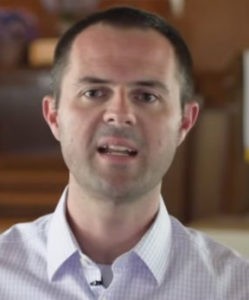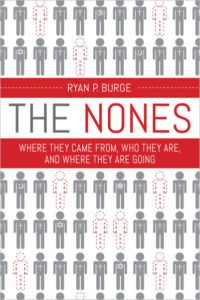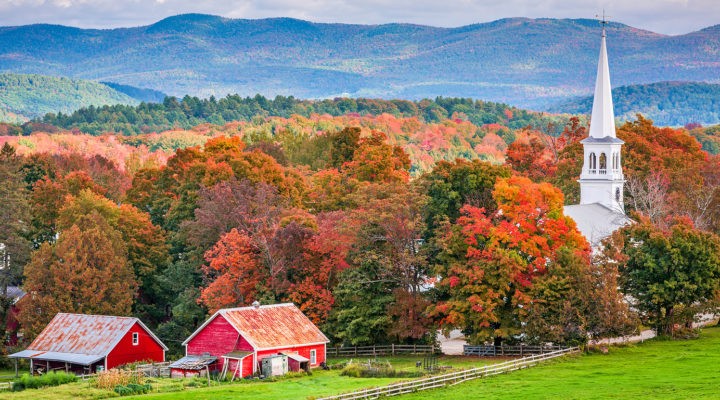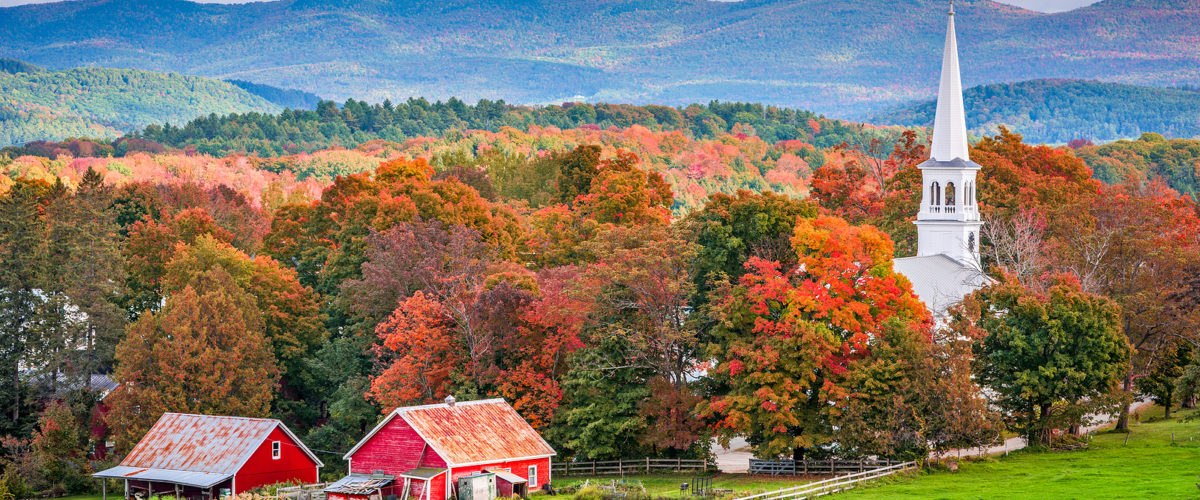Clergy and congregational leaders worried about losing members to the swelling ranks of the religiously unaffiliated need to widen their focus of concern to include the rise of the non-denominational church movement, Ryan Burge said during “Understanding the ‘Nones,’” an April 26 webinar hosted by Baptist News Global.
“Non-denominationals were 4% of the population in 1996, and they are 12% of the population today. Nearly a quarter of all Protestants in America today are non-denominational, up from 3% 30 years ago,” said Burge, a political scientist at Eastern Illinois University and author of the new book The Nones: Where They Came From, Who They Are, and Where They Are Going.
As a result, denominational Christianity faces a challenge from two separate forces: Americans seeking less-structured church experiences, or none at all.

Ryan Burge
“There’s been a drop off in churchgoing, but I think the question is actually kind of double barreled: it’s the nones on one side and non-denominationalism on the other side,” said Burge, also the pastor of an American Baptist congregation in Illinois.
During the webinar moderated by BNG Executive Director Mark Wingfield, Burge covered topics ranging from the identity and growth of the “nones” and the cultural forces that gave rise to them. The event also ventured into discussions on membership, how churches can be more relevant in a post-COVID environment and why ministers needn’t feel responsible for the existence and impact of the nones.
Who are the ‘nones’?
One reason pastoral guilt is pointless is that the trend is just too massive, and has too much momentum, to be stopped, Burge said. “Nones” currently comprise 34% of the U.S. population. They made up just 5% of Americans in the 1970s and reached 22% by 2008.
“They’ve grown 50% in the last 12 years,” he said. “They are, without a shadow of a doubt, the fastest growing religious group in America.”
And there are significant subgroupings of nones including atheists and agnostics, who each represent 6% of the population, while 21% of Americans identify on surveys as the more common type of “none” — people whose religion is “nothing in particular.”
“If you add those three groups together, we call them the ‘nones,’” Burge explained.
Further reason to avoid despair is that many in the “nothing in particular group” are not hostile to religion, as are atheists and agnostics, Burge said. “Nothing in particulars are the people who I’m really the most concerned about as both a political scientist and a pastor because they are just on an island off by themselves and really don’t feel connected to their communities. They are the group that the church should reach out to more.”
“I hope pastors, especially, will stop making a boogeyman when they talk about the nones.”
And this is a group church leaders should stop being afraid of, he added. “I hope pastors, especially, will stop making a boogeyman when they talk about the nones. It’s not Richard Dawkins with the philosophy professor in God’s Not Dead. That is not the typical none.”
“The typical none is someone who does not have a college degree and who makes less than $50,000 a year. Many are struggling economically, socially and spiritually and are disconnected from society. More than 60% of all nones are nothing in particular, so we need to start thinking about the nones and a more inclusive way,” he advised.
“So, stop debating atheists. It’s a waste of time. They’re never going to convert.” But the nothing in particulars remain viable candidates for church outreach.
The nothing in particulars, like others who have dropped out of church for various reasons, will not be reachable forever, though, he added. The longer they are gone, the harder it becomes to bring them back into the fold.
A personal quest
Burge admitted that as both a social scientist and a pastor, he has a personal stake in the subject at hand.
 “My church is also dying. We had 300 people when we moved into our building in 1968. Today we have 15 on a good Sunday, and we’re probably going to close in the next three or four years.”
“My church is also dying. We had 300 people when we moved into our building in 1968. Today we have 15 on a good Sunday, and we’re probably going to close in the next three or four years.”
A desire to understand the motivations of nones led Burge into years of research that culminated in his new book, he said. Hence, his research, writing and speaking are much more than academic exercises.
“Most pastors think, ‘Why is this happening?’ At least in my case, I feel like I have the tools and the training to start answering those ‘why’ questions in an empirically rigorous way and then share that journey with everyone else.”
Death of the social desirability bias
Another factor of why the religiously unaffiliated population is growing so rapidly is that the numbers, until recently, may not have fully reflected many Americans’ attitudes toward church, Burge said.
Social scientists attribute that to a polling concept known as social desirability bias, in which survey respondents lie when asked to identify religious identity and devotion.
“They would tell you the right answer, not the real answer,” he explained. “And the right answer was they were Christian or Protestant, typically Baptist or Methodist or something like that.”
As modern polling has moved from in-person and telephone surveys to online surveys, the social desirability bias has faded, Burge said, leading more Americans to be forthcoming about their disaffiliation from religion. “I think part of what we’re seeing is not a rise in the nones, but just them being more honest on these surveys and telling us what they really are.”
The rise of the non-denoms
Burge outlined a massive shift in religious identity as non-denominational churches have surpassed denominationally affiliated congregations across America — a phenomenon that is uniquely American, he said.
For example, a large portion of Americans raised as Baptists have joined non-denominational evangelical churches as adults, he said. “They’re not leaving the tradition, they’re leaving the denomination, which kind of tells you what’s going on with America as we’re seeing this huge transference.”
In turn, the prevalence of non-denominational Christianity reflects the fragmentation of American society because non-denominational churches are not connected, focus almost exclusively on their own participants and avoid controversy at all costs, Burge said.
“They are growing because they are anti-institutional. They reject labels,” he said. “They … strive to be generic and vanilla and noncontroversial because if your No. 1 job in life is to grow, then the one way to assure you you’re not going to grow is to be partisan, to be divisive and to talk about racial and political issues.”
The fragmentation of evangelicals also is evident in the absence of readily identifiable national leaders, Burge noted. “You could start ticking off a list of people in the ’90s who spoke for evangelicals,” but today it’s difficult to makes such a list. Even Franklin Graham, a longtime champion of fundamentalist causes, recently was chastised on social media for promoting the COVID-19 vaccine — further evidence of fragmentation.
“Denominations gave structure and order and communication,” he said. “Today is just a free for all amongst evangelicals.”
What’s lost and what’s gained
The non-denominational trend is so powerful that many churches no longer want to be associated with denominations – even when they are associated with them, Burge said. That’s why such affiliations usually are omitted from church names, signage or websites.
What’s lost in this trend is the power of denominations to effectively pull churches together on mission.
What’s lost in this trend is the power of denominations to effectively pull churches together on mission, he explained. “If there’s a tsunami in Indonesia, the Southern Baptists can put boots on the ground in 24 hours and put relief funds on the ground in 24 hours” while a non-denominational church “has no apparatus outside their local community.”
What draws people from traditional to non-denominational churches, though, is not missions but personal needs being met: multiple service times, convenient small-group and family ministries and never being asked to volunteer or to become members, he continued. “In these non-denominational churches that are growing very rapidly in America, many of them don’t even have membership as a concept.”
But easy in also means easy out, Burge said. “There is no attachment, no strong sense of community. A lot of those people will come for a while and then leave and go to another non-denominational church because they don’t create those strong ties.”
Coming out of the pandemic, traditional churches are well situated to offer the sense of community many Americans now crave, he advised.
“Set up barbecues or horseshoe tournaments but no preaching, no tracts, no praise and worship music, no service. Just come enjoy the grounds. Have your kids come. Everyone can sit around and hang out and just talk about whatever you want to talk about,” Burge said. “Most people who come to church come for the wrong reasons and stay for the right reasons. So, let’s give them more wrong reasons to come, give them more opportunities for entry, and then if they want to keep coming for the gospel and the theology, great.”
The outlook for denominations
Overall, the outlook for denominational churches is neutral, at best, Burge said. “Everything is either holding steady or declining.”
At the moment, 10% of the U.S. population is made up of mainline Christians, a segment expected to diminish to 5% in a decade.
Burge described the decline as “radical” given that mainline Christians represented 30% of Americans in 1976. “They were literally the largest religious tradition in America in the 1970s.”
“People in the middle don’t have any place to go (to church) anymore.”
That leaves mostly conservative churches and the religiously unaffiliated as the two major options in the U.S.
“People in the middle don’t have any place to go anymore,” Burge said. “The churches that are left in America are almost always theologically and politically conservative, especially among white churches.”
Burge said this ties back into his concern for pastors who may be consumed with trying to counter these massive social trends.
“No matter how good I preach or how I minister, how much I love you or feed my sheep, at some point you can’t beat these forces going on in the world. You just need to understand that your job is to do the best you can with what you have, where you are and let everything else happen around you.”
Related articles:
Ryan Burge sifts the data to paint an evolving portrait of the ‘nones’
Gen Z and growth of the ‘nones’ might have swung presidential election
Faith leaders see ‘nones’ coming to church for community, spiritual direction
Tell the Jesus story and stop worrying about numerical growth, historian advises


